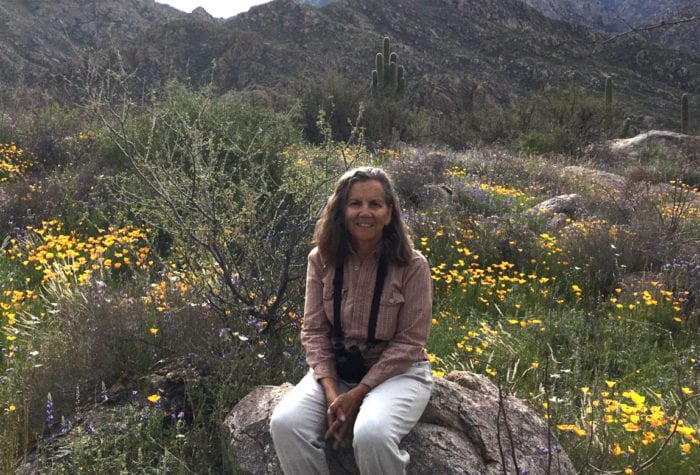My wife, KJ, joined me for the final week of exploration in the Pueblo Mountain WSA near the Nevada state line. After setting up our base camp in Fields we spent the first evening next to a roaring fire on the playa of the Alvord Desert. Watching the embers blow safely away into the dark, where they seemed to merge with the brilliant stars on the horizon, created a mind-bending experience in utter isolation.
As we sat at our camp in Fields that evening planning the dawn shoot, we looked up to see two airplanes taxiing down the main road through Fields, a few hundred yards in front of us. The small sport planes paused at the only stop sign in Fields, then one at a time roared down the highway, briefly out of view as the road sloped away. They swooped back, engines roaring, to climb into the sky on their way to take part in air pylon racing at the north end of Alvord Desert. Fields never disappoints.
The Pueblos mainly consist of two long mountain ridges rising from the desert floor, containing a valley full of springs and meadows. The dirt road along Arizona Creek provided an initial approach toward the main valley but became so uncomfortably narrow and steep that KJ wisely jumped out of the truck to walk while I slowly backed the truck down to safety. After two months of making good decisions while exploring alone, I felt embarrassed about making this bad one.
I returned the next day, parked the truck before the grade became death-defying and continued on foot. Walking up the center of the verdant, sunny valley with Arizona Creek gurgling below, I saw a high pass in the distance that should lead me south to the main valley between the ridges of the Pueblos. To my surprise, I encountered a fence at the top of the pass but was able to pass through the gate. A rough trail continued up and began turning south, leading me to a stunning sunset vista. Lupine and Indian paintbrush were at my feet. Lifting my gaze past a small aspen-filled valley, I watched the sun and clouds alternately brighten and darken the round overlapping hills in the distance, while the dark blue silhouette of massive Steens Mountain loomed on the horizon. I stayed for a very long time, lost in sublime appreciation of the moment.
